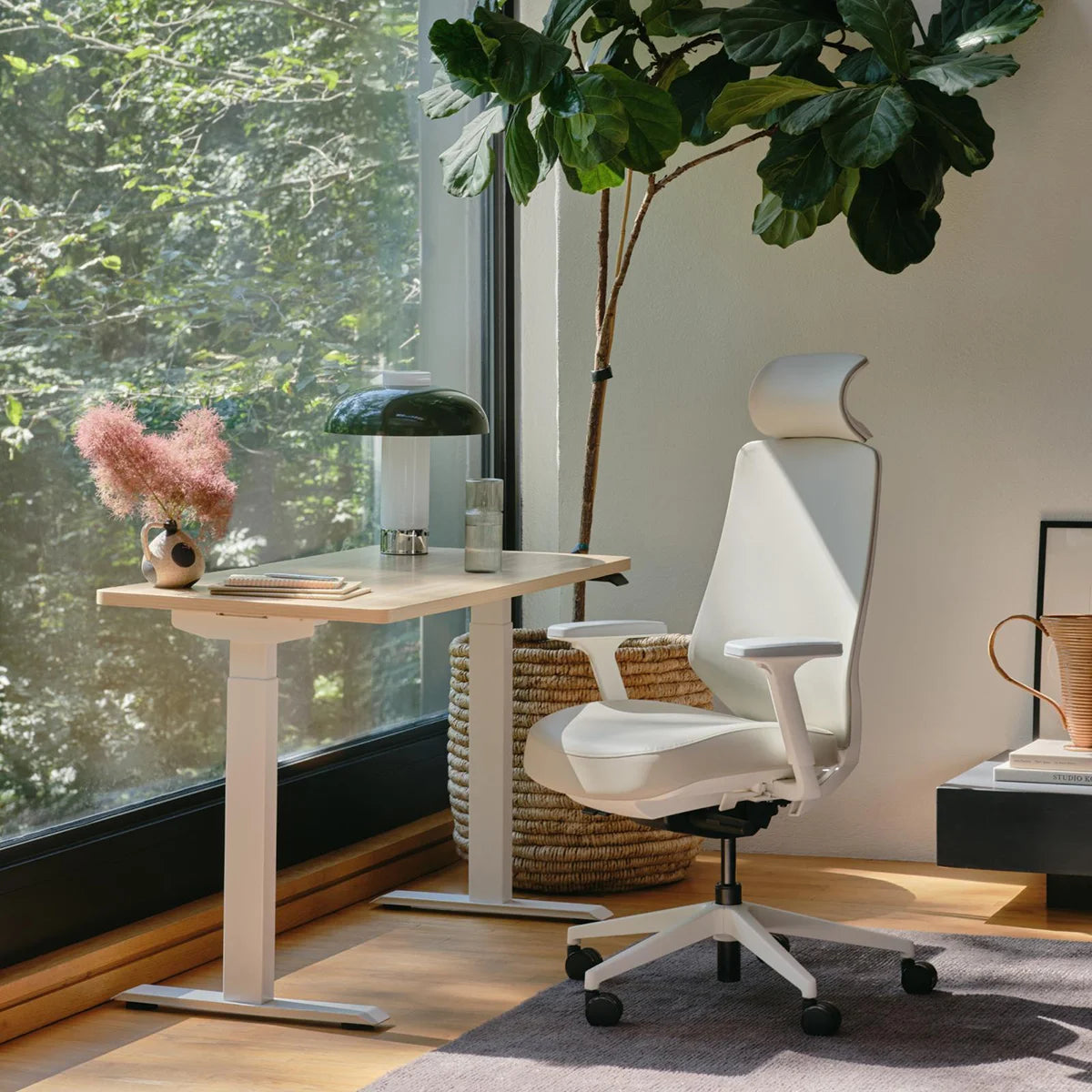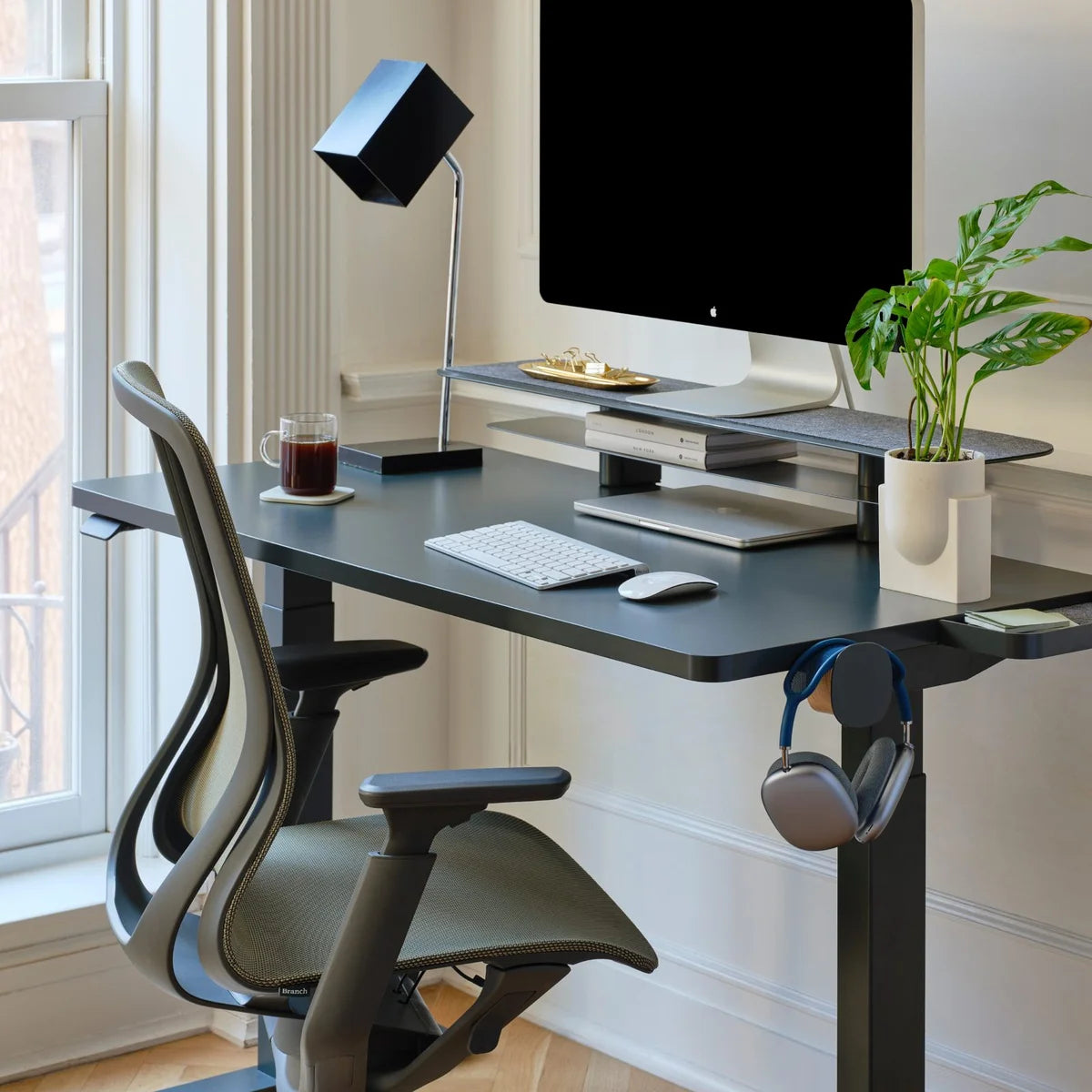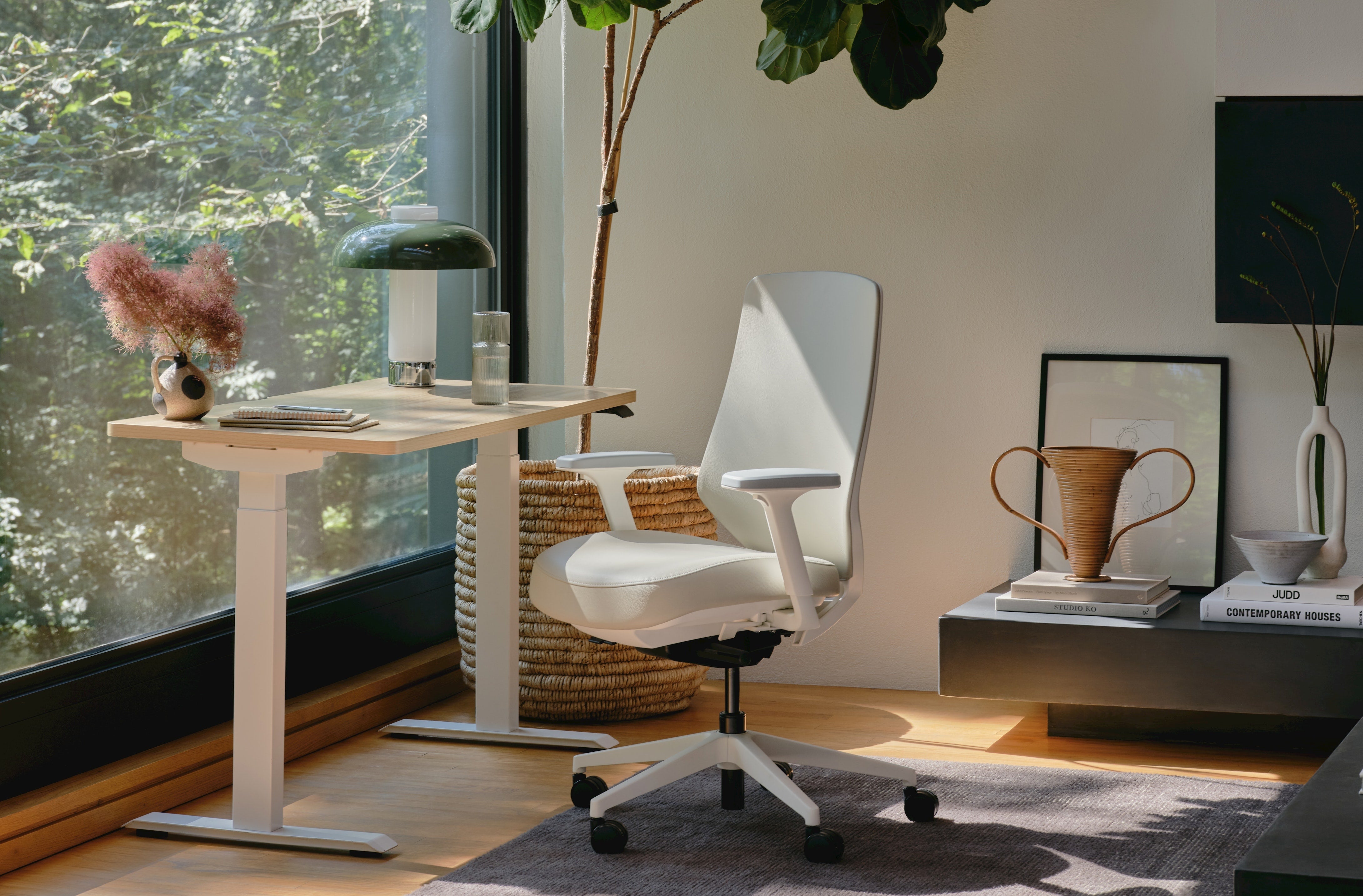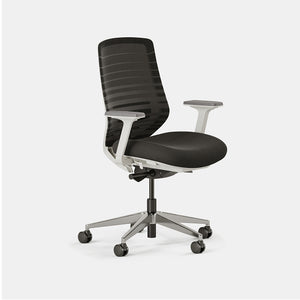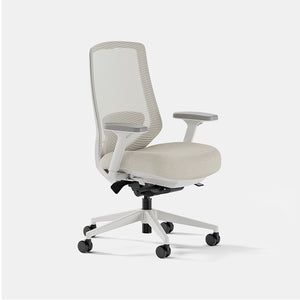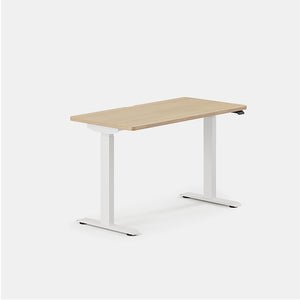Setting up an ergonomic home office is an investment in your health and productivity. By choosing the right furniture and optimizing your setup, you can create a workspace that supports your body and helps you work more efficiently.
At Branch, we believe that workspaces should do more than just function. They should support both the mind and body. Our mission is to transform the way people work by offering ergonomic furniture that enhances productivity and well-being.
Whether you need an ergonomic office chair that provides all-day support, a standing desk that promotes movement, or a credenza that keeps your space organized, our thoughtfully designed pieces help create a workspace that works for you.
Designed for both aesthetics and functionality, Branch products feature modern, professional designs that fit seamlessly into any home office. A comfortable, productive workspace starts with high-quality furniture that adapts to your needs, and we’re here to help you build that space with confidence.
Sources:
Supporting the productivity and wellbeing of remote workers | PMC
Ergonomics | PubMed
Ergonomic Chairs | University of New Hampshire
Effects of a Workplace Sit–Stand Desk Intervention on Health and Productivity | PMC





